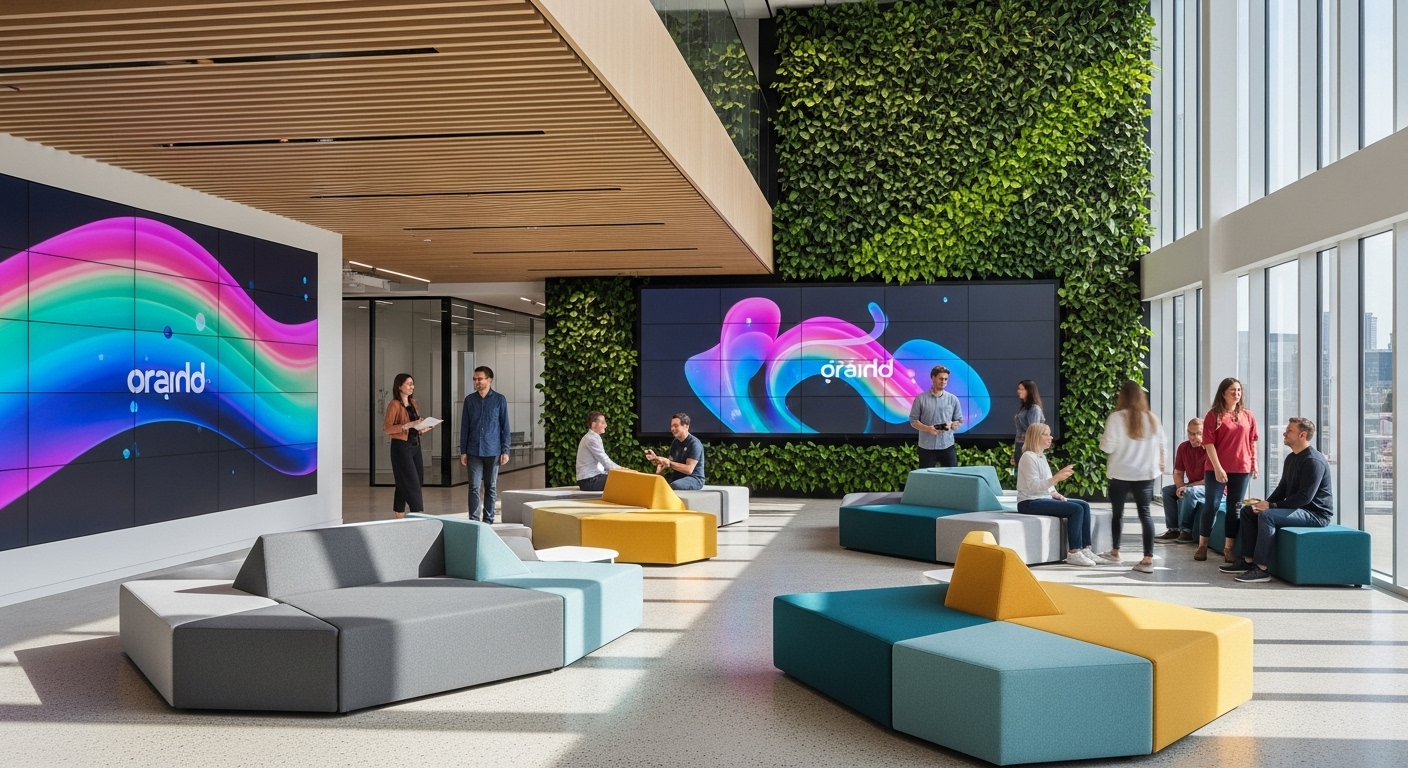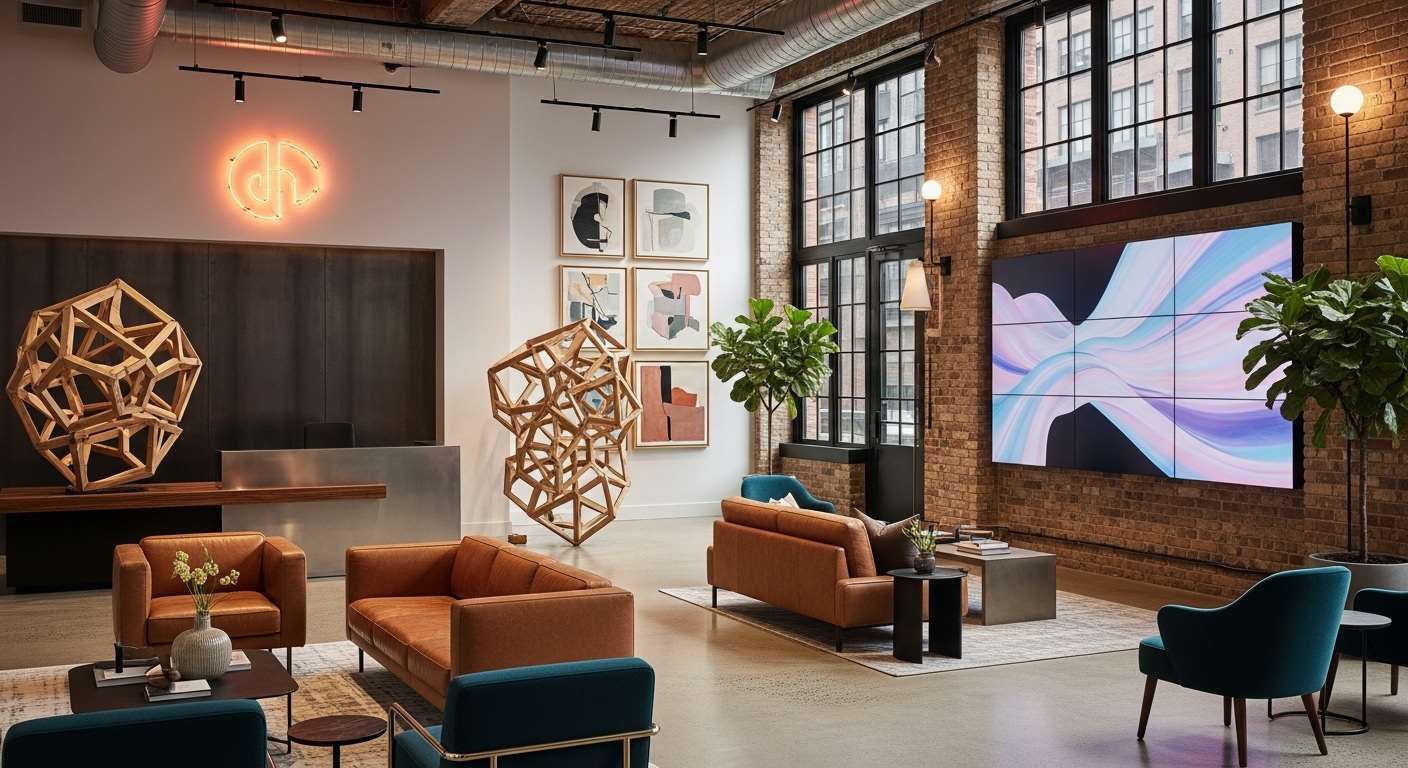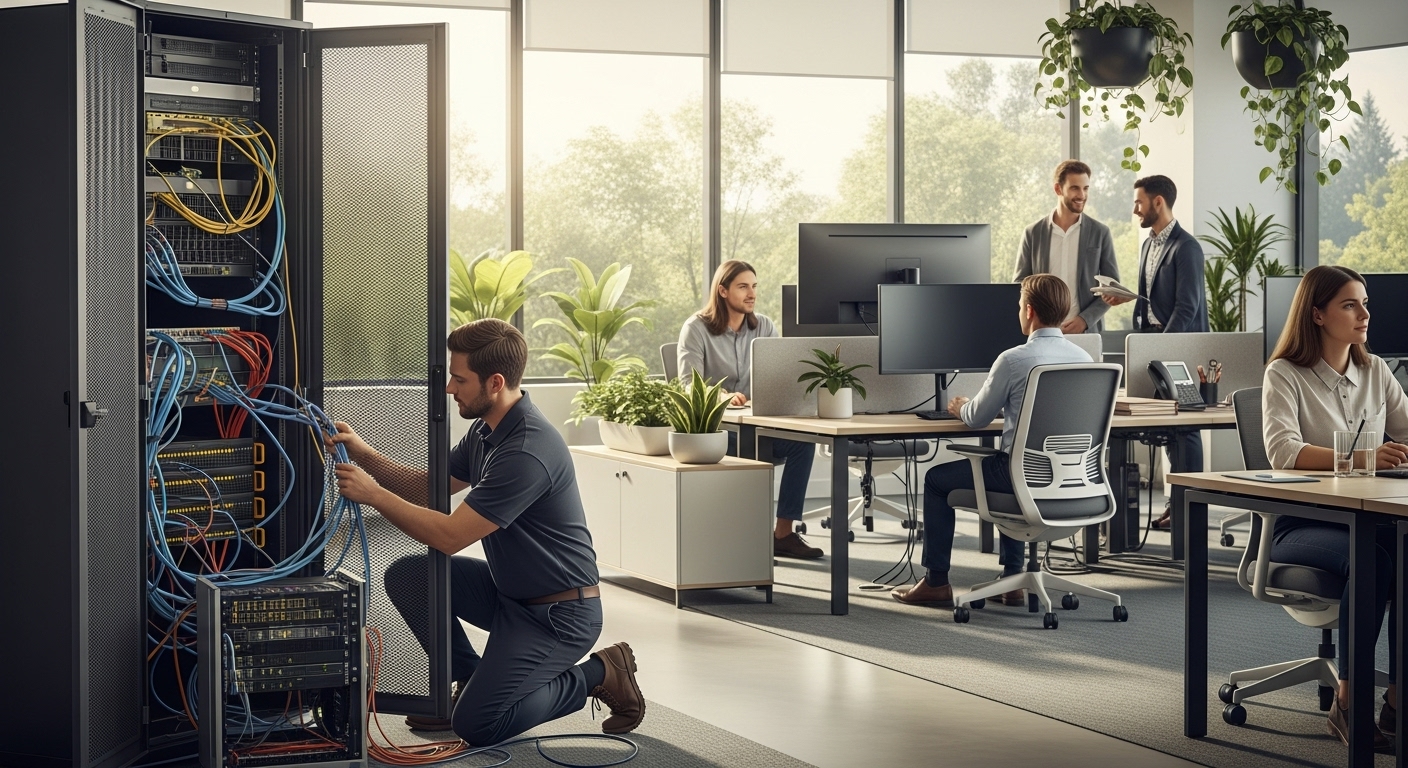In an age of constant digital transformation, the concept of a static, unchanging physical space feels increasingly outdated. Your brand is a living, breathing entity, and your workspace or retail environment should reflect that dynamism. The era of designing a space once and leaving it for a decade is over. Today, forward-thinking companies are embracing a more fluid, adaptable approach known as kinetic branding. This strategy moves beyond mere aesthetics to create multi-sensory, evolving environments that can adapt to new campaigns, shifting work styles, and changing customer expectations. Recent trends show a decisive shift towards integrating the physical and digital—creating ‘phygital’ experiences—and using modular design to build spaces that are as agile as the teams who use them. This guide explores how to design these fluid spaces to build a stronger internal culture and forge a lasting connection with your clients.
Beyond the static: embracing the philosophy of fluid design
The core philosophy of a kinetic brand is the rejection of permanence in favor of adaptability. It’s about creating physical environments that can be easily reconfigured to serve multiple purposes, tell different stories, or cater to various events. Think of your space not as a fixed portrait, but as an interactive canvas. This shift is driven by the need for businesses to be more agile. A retail space might need to transform from a product showcase into an event venue overnight, while an office must accommodate both deep, focused work and large-scale collaborative projects. The rise of pop-up shops and temporary brand activations is a perfect example of this principle in action. These installations require incredible logistical agility, using modular displays, portable technology, and efficient setup processes to create high-impact experiences without the commitment of a long-term lease. This mindset, born from logistical necessity, is now informing the design of more permanent spaces, where modular furniture, movable walls, and dynamic digital signage allow the environment to evolve in real-time.
The employee experience: branding for engagement and retention
Your office is one of the most powerful tools for shaping company culture. A fluid design approach allows you to create a workspace that truly lives and breathes your brand’s values, directly impacting employee engagement and retention. Instead of static posters listing company values, imagine digital walls that celebrate team achievements and company milestones in real-time. Workspaces can become more democratic and functional when they aren’t fixed. Modular workstations and furniture allow teams to reconfigure their environment based on the specific needs of a project, empowering them to create their ideal collaborative or focused setting. This adaptability is key in the age of hybrid work, where the office’s role is shifting from a place of mandatory attendance to a hub for intentional collaboration. By creating distinct, adaptable zones—quiet pods for concentration, open lounges for casual interaction, and project rooms with movable whiteboards—you cater to diverse work styles. This demonstrates a commitment to employee well-being and productivity that goes far beyond a simple logo on the wall, fostering a culture where employees feel valued and understood.
The customer journey: crafting immersive and memorable touchpoints
For clients and customers, a kinetic space transforms a simple visit into a memorable brand journey. Fluidity allows you to tailor the physical environment to specific campaigns or audiences, ensuring a fresh and engaging experience every time. A retail store, for example, can completely change its layout and atmosphere to align with a new product launch, using modular shelving and dynamic lighting to guide the customer’s focus. This moves beyond static product displays to create an immersive narrative. The integration of multi-sensory elements is crucial here. Think signature scents that change with the seasons, curated soundscapes that match the brand’s energy, and tactile materials that invite interaction. This is where the line between physical and digital blurs to create powerful ‘phygital’ touchpoints. Imagine a customer picking up a product, triggering a nearby digital display to showcase its story, user testimonials, or customization options. This interactive approach captures attention and creates a deeper, more emotional connection to the brand, making the physical space an indispensable part of the marketing ecosystem.
The ‘phygital’ handshake: integrating technology seamlessly
The seamless integration of technology is the engine that drives a truly kinetic brand environment. ‘Phygital’ design is about using digital tools to enhance the physical experience, not distract from it. The goal is to create intuitive interactions that feel both innovative and natural. In a client-facing space, this could manifest as an interactive welcome screen in the lobby that personalizes its message, or augmented reality (AR) applications that allow visitors to visualize a product in the space before they buy. QR codes are no longer just links; they are gateways to immersive content, from the history of a product’s design to behind-the-scenes videos. In an office, technology can support fluidity through smart booking systems for desks and meeting rooms, or digital whiteboards that save and share collaborative sessions automatically. The key to a successful ‘phygital’ strategy is subtlety and purpose. The technology should feel like an organic extension of the space, working in the background to make the environment more responsive, informative, and engaging for everyone who uses it.
Sustainability as a dynamic principle: eco-friendly and adaptable spaces
A fluid design philosophy aligns perfectly with modern sustainability goals. Building an adaptable space inherently reduces waste over the long term. When a space can be reconfigured rather than demolished and rebuilt, you dramatically lessen its environmental impact. This dynamic approach to sustainability is a powerful brand statement. The materials used for modular components can be sourced responsibly, utilizing recycled, reclaimed, or rapidly renewable resources. For example, modular wall systems or furniture can be built from compressed recycled paper or sustainable wood. Energy efficiency also becomes more dynamic. Smart lighting and climate control systems can use sensors to adapt to how a space is being used at any given moment, reducing energy consumption in unoccupied areas. By showcasing these choices—not just in a report, but in the tangible design of the space—you demonstrate a genuine, integrated commitment to the planet. This resonates strongly with both employees and customers, who increasingly prioritize brands that share their values.
The logistics of fluidity: planning and executing your kinetic brand
Creating a space that is designed to change requires a paradigm shift in logistics and planning. The traditional ‘build it and forget it’ model is replaced by a strategy of ongoing operational agility. Success hinges on establishing a robust and flexible logistical backbone. This begins with sourcing the right components. It’s crucial to forge strong partnerships with suppliers who specialize in high-quality modular furniture, reconfigurable wall systems, and durable, portable display elements. The digital infrastructure must be equally robust; a space designed for ‘phygital’ experiences needs reliable, high-speed connectivity and an easily updatable content management system for all digital displays. Furthermore, the internal teams or external partners responsible for managing the space must adopt an agile project management approach. They need the training and tools to execute spatial reconfigurations quickly and efficiently, whether they are preparing for a quarterly town hall, a major client presentation, or a new marketing campaign. This logistical foresight is the invisible engine that makes the kinetic brand environment possible, ensuring the space can adapt as quickly as the business itself.
In conclusion, the shift towards kinetic branding represents a fundamental evolution in how we view physical spaces. Moving away from static, rigid designs allows companies to create environments that are true reflections of their dynamic cultures and ever-evolving brand stories. By embracing fluid design principles, businesses can build adaptable workspaces that empower employees, boost retention, and foster a strong sense of community. Simultaneously, these principles can be used to craft immersive customer journeys that forge deep, lasting connections and stand out in a crowded marketplace. The integration of seamless technology and a commitment to dynamic sustainability are critical pillars of this new approach. Ultimately, the kinetic brand understands that its physical space is not just a container for its operations, but one of its most powerful storytellers—a living asset that actively drives culture, connection, and growth.





